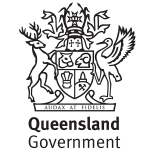

There was no way I could forget my daughter’s six week vaccination appointment. From the day she was born, I was constantly reminded of the importance of these immunisations, whether from doctors, midwives or several colourful posters decking out the hospital corridors.
The actual day that Emmy was immunised will always linger in my memory, thanks to the powerful emotions that accompanied them. It was both a happy and sad moment.
Happy, because Emmy was finally six-weeks-old, and eligible to be vaccinated against devastating infections such as whooping cough, diphtheria and hepatitis B. As I have family who live in developing countries, I never take Australia’s high medical and health standards for granted. I’m grateful for every vaccine available.
On the other hand, I felt sad, as I knew that the needles would hurt Emmy. However, that pain was quick and temporary, and she was back to her normal self soon enough. And I knew that the short-term pain had the best long-term gain possible: protection from preventable diseases.






























































































